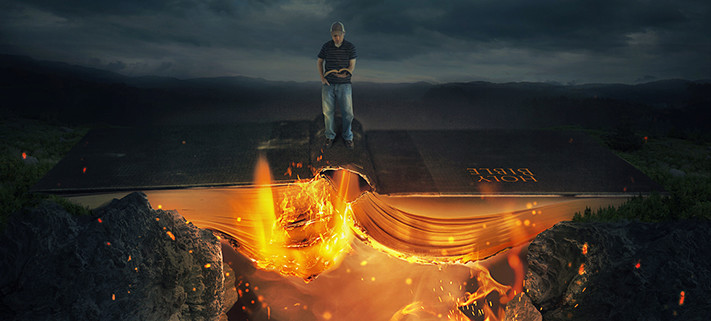Who is Satan?
Have you ever seen the Loch Ness Monster? How about Sasquatch or Big Foot? These are only a few of the imaginary creatures we hear about. Their “sightings” make front page news in the tabloids.
There is a city in Northern Wisconsin that calls itself “The Home of the Hodag.” According to Eugene Sheperd, who supposedly discovered the hodag in 1893, it has “the head of a frog, the grinning face of a giant elephant, thick short legs set off by huge claws, the back of a dinosaur, and a long tail with spears at the end.” It’s a popular creature in the area. Even the local high school has the hodag as its mascot.
Some people see Satan as a fictional creature. He’s the little red man with horns and a pitchfork. Or he’s the ghost-like figure that can scare the bejeebers out of you in a movie like “Exorcist.” Or a normal good-looking person as he sometimes portrayed on TV or in movies.
So who is Satan? Or what is he? A monster? A mascot? A movie star? Satan may be all of these, but one thing he isn’t is imaginary. Satan is real. And he is a personal being—not with flesh and bones but a spiritual “being.” That might sound complex, but really it’s quite simple.
The Bible calls Satan a fallen angel. At first there were only good angels. God gave them a choice to serve him or serve themselves. Some of them rebelled against God and decided to serve themselves. Satan was a leader of this group and he led a large number of angels in a rebellion against God. The good angels stayed with God, continue to serve God, and enjoy God’s blessings. Satan and the evil angels rejected God, hate him with a passion, and serve themselves. (See 2 Peter 2:4 and Jude 6)
As an evil angel, Satan is pretty powerful, but not nearly as powerful as God. Jesus is proof of that. He took on the devil in one-on-one combat and it wasn’t even close. It turned out just as God said it would. Satan bruised the heal of Jesus, but got his head crushed in the process. That’s what the cross did.
The amazing thing is that Jesus crushed all our sins in the process. Like Satan, the bad things we do are real. Yet the cross is also real. And that is where Christ defeated Satan and won real life, real hope, real forgiveness.



